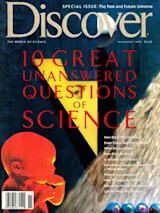Oh, my God, I tell my companions as we’re waiting for the elixir to kick in. I kind of remember how to do quadratic equations! Soon I’ll probably solve the mysteries of galaxy formation. Then maybe I’ll understand the secret of life. Maybe I’ll even understand the lyrics to ‘Louie, Louie!’
You can get a little overoptimistic when you toss back your first New Blue, a blueberry syrup, vitamin, and amino acid cocktail that’s one of an emerging strain of potent potables (Don Pardo’s favorite category) called think drinks, or smart drinks: nonalcoholic beverages enhanced with additives alleged by their purveyors to improve memory, concentration, learning, and general well-being and to reverse some of the effects of aging.
I’m tripping down the primrose path of self-improvement at the smart bar of the DNA Lounge, a club in San Francisco’s SOMA (South of Market) district, the happening part of town. (To ...














